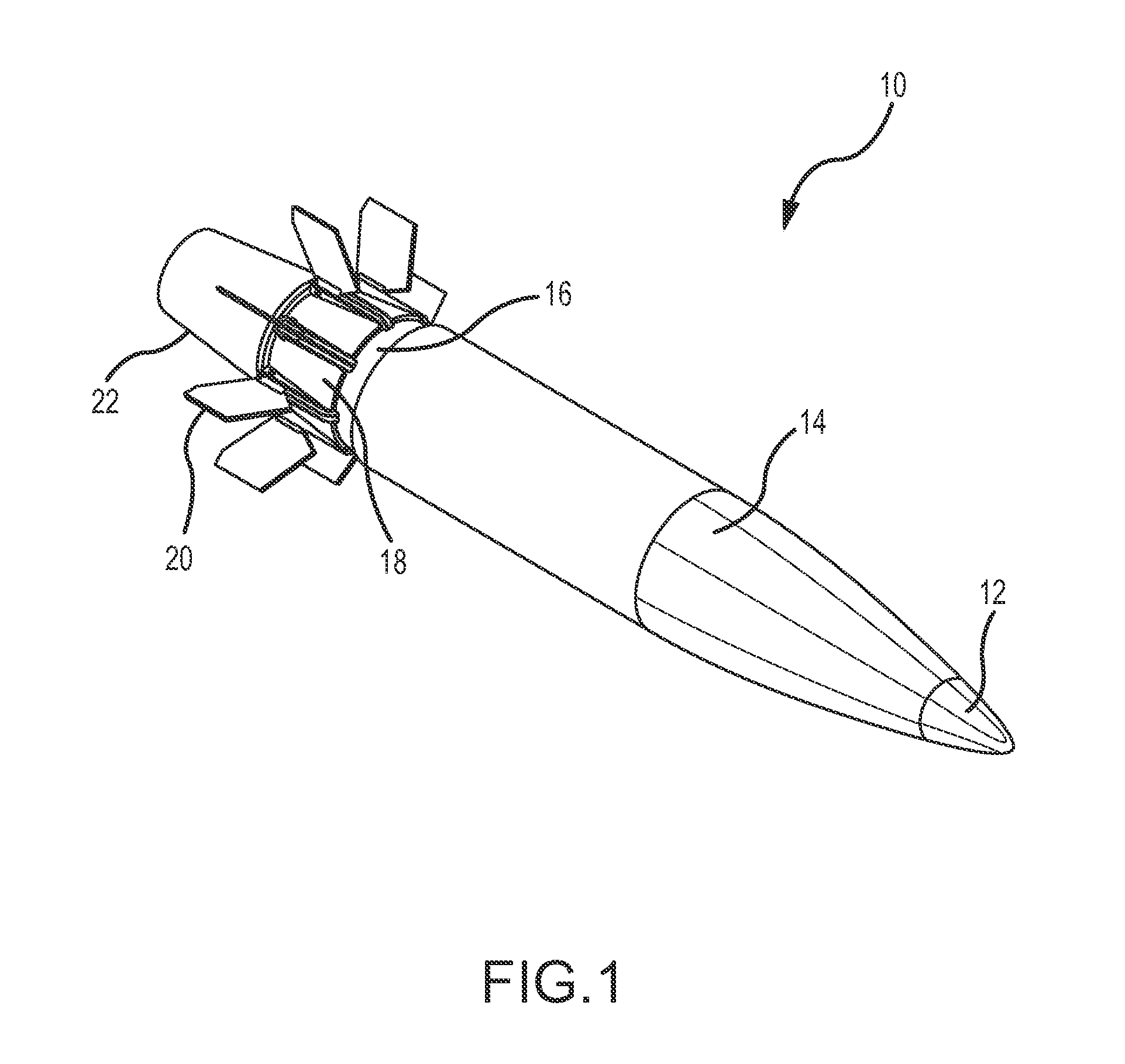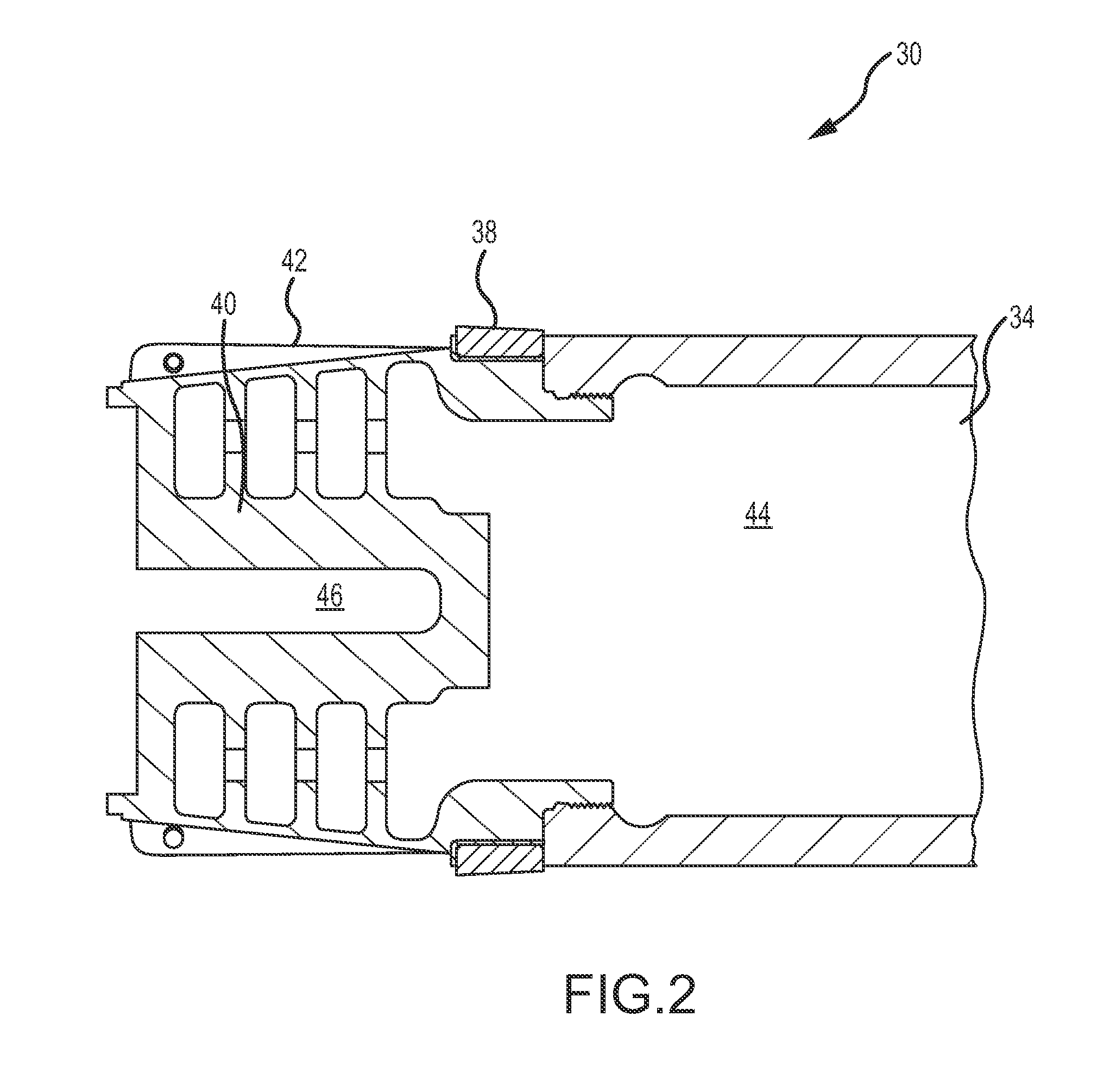Deployable fairing and method for reducing aerodynamic drag on a gun-launched artillery shell
a technology of artillery shell and aerodynamic drag reduction, which is applied in the field of artillery shells, can solve the problems of limiting the maximum range of the shell, increasing the drag, and low pressure behind the shell, so as to reduce the area behind the shell, reduce the aerodynamic drag, and extend the range of the artillery shell
- Summary
- Abstract
- Description
- Claims
- Application Information
AI Technical Summary
Benefits of technology
Problems solved by technology
Method used
Image
Examples
Embodiment Construction
[0027]The present invention describes a deployable fairing driven off of high-pressure gun gases to reduce base drag and extend the range of the artillery shell. Base drag reduction is accomplished without the use of active propellants, either to deploy the fairing or in a base-bleed configuration.
[0028]The present invention is generally applicable to all types of artillery shells for use in all types of guns that launch artillery shells from a launch tube. Artillery shells are distinguished from rockets and missiles in that artillery shells are not self-propelled, they rely on high-pressure gun gasses created in the launch tube from the deflagration of propellant within the tube to propel the shell towards a target. The “gun” may be any configuration of a launch tube and propellant (e.g. black powder, nitroglycerine, nitrocellulose, nitroguanidine or combinations thereof) configured to generate the high-pressure gun gasses to launch the shell towards the target. Such “guns” may als...
PUM
 Login to View More
Login to View More Abstract
Description
Claims
Application Information
 Login to View More
Login to View More - R&D
- Intellectual Property
- Life Sciences
- Materials
- Tech Scout
- Unparalleled Data Quality
- Higher Quality Content
- 60% Fewer Hallucinations
Browse by: Latest US Patents, China's latest patents, Technical Efficacy Thesaurus, Application Domain, Technology Topic, Popular Technical Reports.
© 2025 PatSnap. All rights reserved.Legal|Privacy policy|Modern Slavery Act Transparency Statement|Sitemap|About US| Contact US: help@patsnap.com



